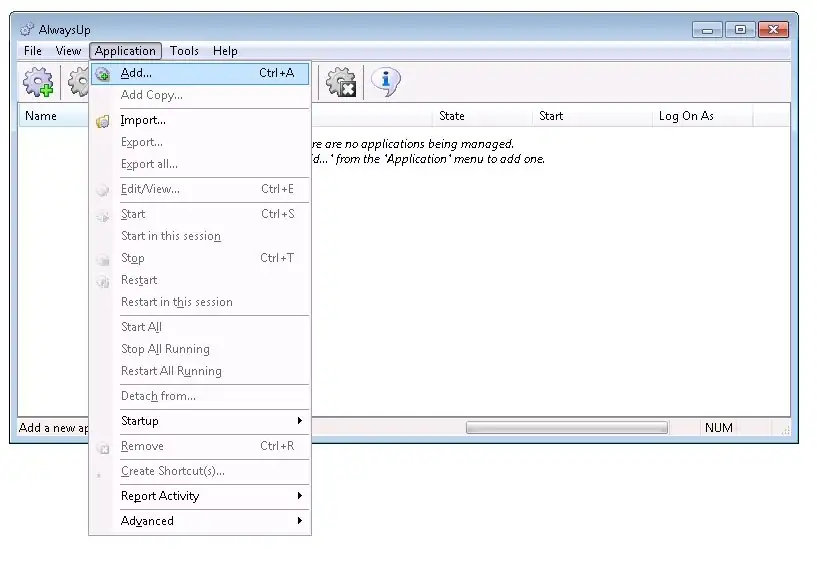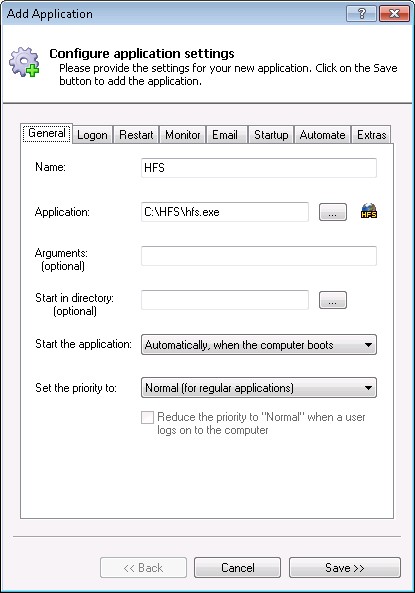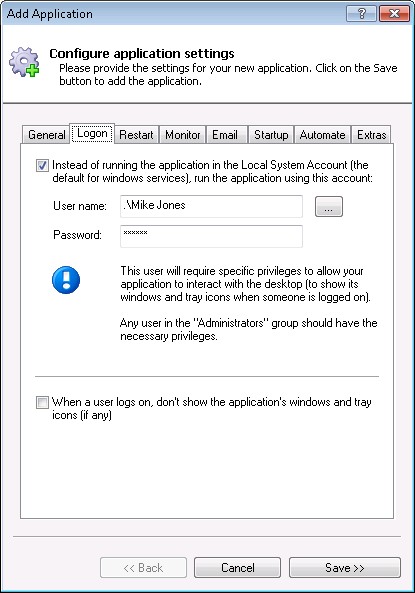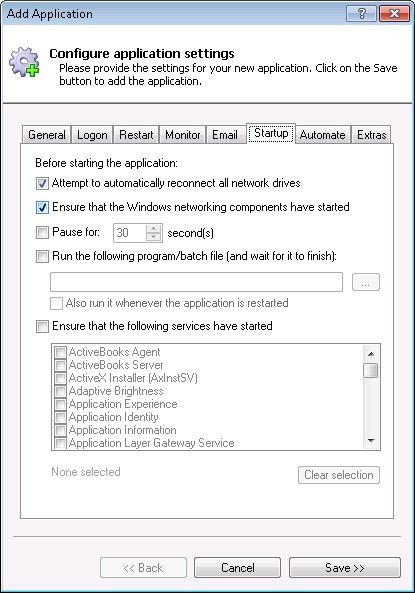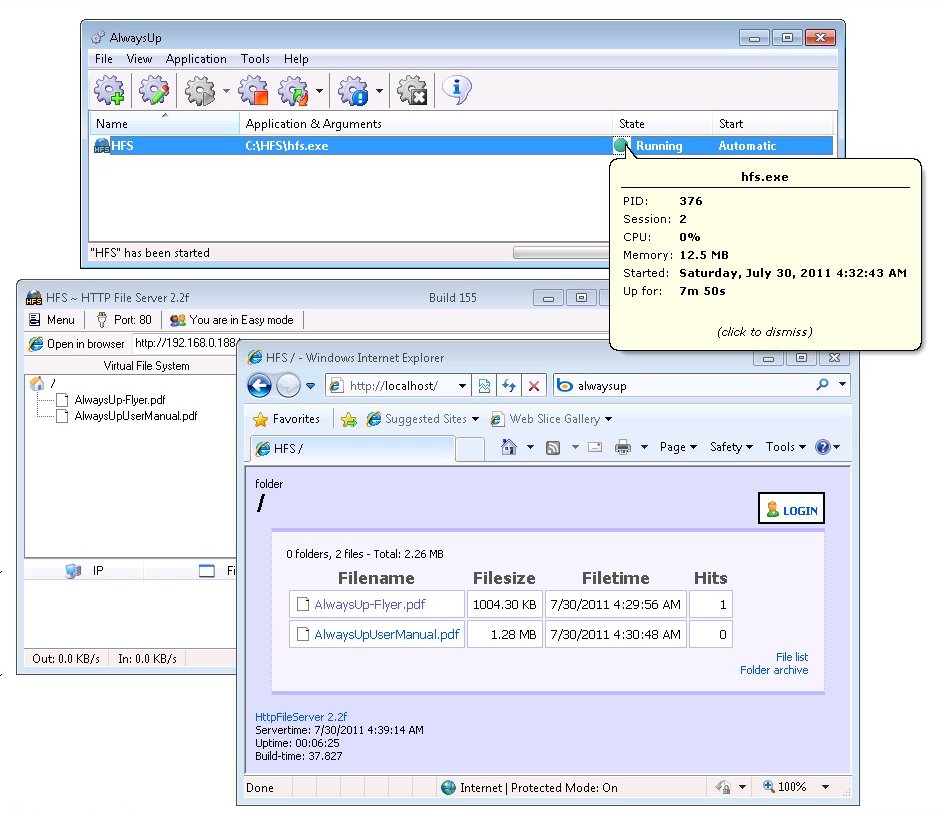-
Download and install AlwaysUp, if necessary.
-
Download and save the HFS executable to a new folder, if necessary.
Please make a note of the location as it will be used in a later step. We used C:\HFS for this tutorial.
-
Start AlwaysUp.
-
Select Application > Add to open the Add Application window:
-
On the General tab:
-
In the Application field, enter the full path to the HFS executable. Since we placed HFS in C:\HFS, we will enter:
C:\HFS\hfs.exe
-
In the Name field, enter the name that you will call the application in AlwaysUp.
We have used HFS but you can specify almost anything you like.
-
Click over to the Logon tab and enter the username and password of the account in which you installed and use HFS.
HFS will run in this account so that it can find its settings.
-
Move to the Startup tab and check the Ensure that the Windows Networking components have started box.
This informs AlwaysUp that HFS needs the TCP/IP networking stack to do its work.
-
Click the Save button. In a couple of seconds, an application called HFS will show up in the AlwaysUp window.
It is not yet running though (the state will be "Stopped"):
-
To start HFS, choose Application > Start "HFS". The state will transition to "Running" and HFS will start serving your files.
Note that because of
Session 0 isolation,
the HFS window won't come up on your desktop.
That's because the web server will be running in the background session where all Windows Services operate.
If you do wish to see the HFS window, select Application > Restart "HFS" in this session,
which will quickly stop HFS and start it again on your desktop:
-
That's it! Next time your computer boots, HFS will start up immediately, before anyone logs on.
We encourage you to edit HFS in AlwaysUp and check out the many other settings that may be appropriate for your environment.
For example, setup a sanity check to detect if the servers tops serving pages, configure a weekly restart to cure memory leaks or boot priority to serve pages a bit faster.

